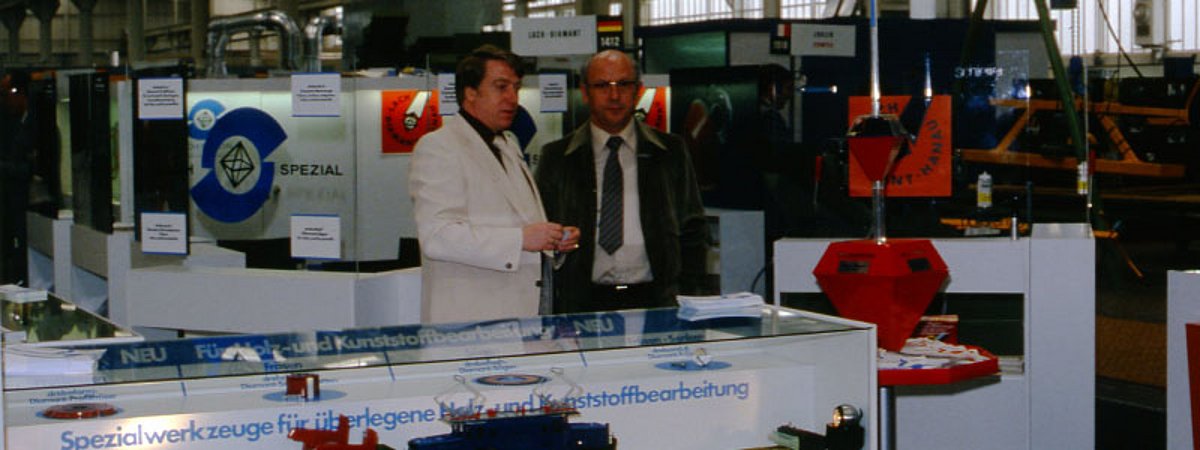Lach Diamant congratulates Ligna on its 50th birthday

Lach Diamant has been associated with Ligna for many years. In 1979, the company presented diamond tools for wood and plastics, which at the time were still met with skepticism by traditional tool manufacturers.
When it became known in the run-up to the 3rd Ligna in 1979 that Lach Diamant - under the banner of the newly founded Lach-Spezial Werkzeuge GmbH - wanted to exhibit diamond tools for the superior machining of wood and plastics for the first time in the world, there were many skeptical comments from traditional tool manufacturers. One is said to have read: "Now Lach has gone mad, now he wants to machine wood with diamond too..." However, the new introduction was a great success. The 250 - 350 times superior service life of the diamond cutting edge compared to the carbide cutting edges previously used in series production set the trend for the construction of woodworking machines. It was finally possible to use and further develop the beginnings of numerical control (NC) for moving the axes in routers, for example; diamond was now the perfect material.
European patent on diamond tools for wood and plastics
The industry owes its success to a brilliant idea from Horst Lach, which he applied for a patent for on 13 October 1978: European Patent No. 0 010 276: Method and apparatus for machining a polycrystalline synthetic diamond and use of the diamond machined by this method, granted and published on 21 April 1982. An excerpt from the patent claims: "Method for the electroerosive machining of polycrystalline synthetic diamond, characterized in that the machining is carried out by spark erosion to produce any desired profiles. Polycrystalline synthetic diamond produced according to claim 1, characterized in that the polycrystalline synthetic diamond machined by electrical discharge machining has a profile of a circular disc or a circular section or a circular ring or a circular ring section or a rectangle or an elliptical section or a shape composed of these configurations. Use of polycrystalline synthetic diamonds machined by electrical discharge machining as cutting edges in single- or multi-edged revolving tools, preferably for machining hardwood or plastic panels or chipboard."
Long service life of diamond tools
Apart from the many economic advantages, the diamond tool also quickly became popular with the operators. Previously, the foremen had to change carbide tools after just one shift and were therefore still present on the third shift - but they were more than happy with the long service life of the diamond tools. With the first presentation of a complete slide tool program, Lach Diamant wrote itself into the history of the wood and plastics industry.
